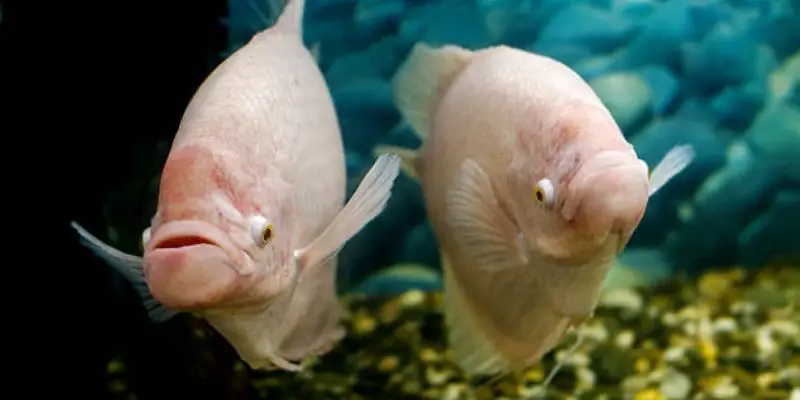I’ve always liked gouramis. They look pretty and some species have a playful sense of humor. But sometimes they can be bullies. Let’s find out why and what to do about it.
Gouramis belong to the Osphronemidae family, along with bettas and arowanas. That’s why they’re often called “gourami” or “sultan fish.” They are freshwater fish that originated in Asia but are now found around the world.
The most popular species of gouramis for home aquariums is the dwarf gourami (Colisa lalia). Other common species include the blue and gold gourami (Trichogaster trichopterus) and the kissing gourami (Helostoma temmincki).
Gouramis come in a wide array of colors, shapes, and sizes. Most are very easy to care for and not picky about food. They’re also territorial, but that’s only one reason they sometimes cause problems in the home aquarium.
Why Do Gouramis Bully Other Fish?
Gouramis are not picky about food, easily adapt to new surroundings, and aren’t afraid of people, so they can be somewhat aggressive toward other fish. Sometimes this behavior is simply territorial, but it can also be stress-induced.
Stress-Induced Aggression
When gouramis are kept in the company of other gouramis, territorial aggression may be exhibited toward individuals that are stressed or sick. There are usually no apparent injuries on these fish, but territoriality kicks in nonetheless. The best thing to do for stressed fish is to remove them from the tank and keep them in a quarantine or hospital tank.
Physical Injury-Induced Aggression
If you see an injured fish, it’s best to remove it as soon as possible to avoid any additional stress. Even gouramis that appear friendly and playful can become aggressive when they perceive another fish as a threat.
Stress-Induced Dominance
Gouramis usually get along fine, but if one of the gouramis is sick or stressed out for some reason, it may win competitive battles over food and space. If this happens, remove the stressed fish to the hospital tank before things get worse. To avoid stress in the first place, keep your gouramis in a larger tank (at least 20 gallons) with lots of hiding places and no aggressive or territorial fish.
Tank Mates for Gouramis
If you plan to add gouramis to an existing community aquarium, make sure the other fish are not too small or slow. Otherwise, they may become food for the gouramis.
Gouramis are best kept in peaceful community aquariums with good-natured fish like platies, angelfish, and tetras. Avoid keeping them together with larger or aggressive fish like cichlids and catfish. Some angelfish species may even attack them.
Gouramis usually get along great with bettas, though, and there are also some gourami species that can be kept in a smaller tank on their own, such as the banded or three-lined gourami (Trichopsis pumila). Some hobbyists have successfully kept male and female bettas together with gouramis, and they seem to do fine in a 40-gallon community aquarium. However, this setup is by no means ideal, so don’t expect your gouramis to stay healthy long in it.
In Conclusion
Gouramis are usually safe fish that get along fine with other non-aggressive and non-territorial tank mates. But when they become aggressive and start bullying other fish, it’s usually because of stress or injury, and there’s not much we can do about that except removing the injured fish to a quarantine tank.
If you want to add gouramis to an existing community aquarium, start with peaceful community fish and don’t add larger or more aggressive tank mates. Don’t forget to do your research before you bring new fish home!

